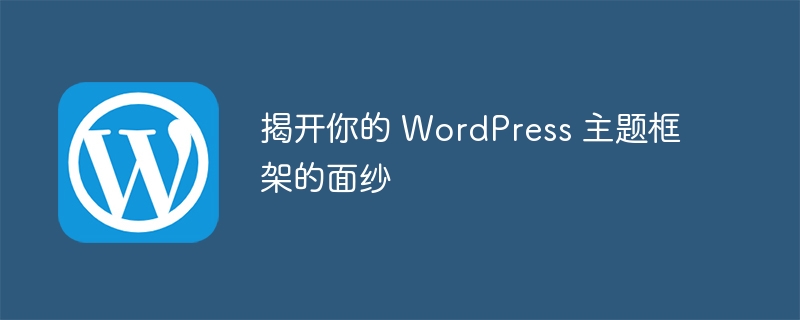

You may have just developed a theme framework for yourself and/or your team, in which case the steps involved in publishing the code will not be relevant. But if you want your code to be widely available, you have to find some channel to distribute it and decide whether you want people to pay for it.
In this tutorial I will look at the following options:
free:
Premium:
I would also look into the "freemium" option, which would include both of the above.
If you develop a framework to support your own work, but also want to make it available to others, you may consider publishing it for free. This gives back to the WordPress community and gives you access to many talented developers who may be able to help you improve the framework.
If you want to distribute your code for free, you have two main options:
This is the first place WordPress users and developers look when looking for free themes in the market and is the most trusted source for free WordPress themes. Submitting a theme will cost you nothing, but you will need to make sure it meets the theme review guidelines:
readme.txt file. Theme unit tests are the tests that theme reviewers will run on your site during the review process, so it's worth running it on your theme before submitting. The steps are:
WP_DEBUG to true in wp-config.php. If your theme passes the test and meets the criteria listed above, then you are ready to submit it. Please upload according to the guidelines given, and don't be impatient - the theme testers are volunteers doing this work on their own time, so can't give you an answer right away.
Using GitHub to distribute your theme gives you more control than using a theme repository, and can save you some steps when updating your theme.
To start this process, all you need to do is create a public repository with your theme files. You may or may not want to create a specific account for your framework (or the organization associated with your account) to keep it separate from your own GitHub account (if you have one). The benefit of this is that you can add plugins and child themes in a separate repository on your new account and create a space for everything related to the standalone framework.
Your users can easily download your code from GitHub or simply clone it if they want to work on it themselves. Additionally, you can encourage other users to improve and add to the framework by forking it, but be sure to review all changes before accepting revised code back to the master branch of the repository.
If your framework is aimed at developers, then GitHub is a useful tool, but if you are targeting users, then you are better off using a WordPress theme repository, which is more user-friendly.
When releasing a framework as a premium product, you have two options:
Using a third-party vendor will give you the advantage of making your theme more visible, but it does mean that the vendor will take a percentage of your sales. In the early days, this can be well worth it, as you'll be able to reach more potential users and therefore potentially make more money. If your framework becomes more mature, you may decide to distribute it yourself.
There are many theme providers available for you to use. Many of them only sell child themes of their own frameworks, so make sure you use a provider that sells standalone themes. You also need to make sure that your framework can be marketed as such and not just as a standalone theme.
Since the market is constantly changing, I will not provide a list of theme vendors, but can only recommend that you search carefully and find vendors that sell the type of theme you make to your target market. And check how much they charge and whether they use a GPL license.
Distributing the framework yourself will give you more control over how you sell it, how you bundle it, and the child themes and plugins you will develop to support it. You won’t be able to enter the big market this way, but you could decide to go with a “freemium” model, offering some code for free via the WordPress theme repository and others via subscription.
To sell frames on your own website, you need to create documentation for your users and set up online subscriptions and secure downloads. Plugins like WooCommerce will help you do this. You also need to create a marketing plan.
The idea of "freemium" themes and plugins is always evolving, and new ways to make it work are constantly emerging, but here are some ideas:
The advantage of this model is that you have access to the WordPress theme repository where thousands of users download themes every day, and you can point them to your own website to access premium features, which gives you more than what you would have on your own More control using theme providers.
Publishing your frames to other users gives you the opportunity to earn money or give back to the community. As I showed, you can choose to release your code for free or for a fee, or a combination of both.
Which one you choose will depend on your own situation and the target users of your framework. Whichever you choose, be sure to update the framework files for your users and review your policies from time to time.
Good luck!
The above is the detailed content of Uncover your WordPress theme framework. For more information, please follow other related articles on the PHP Chinese website!




